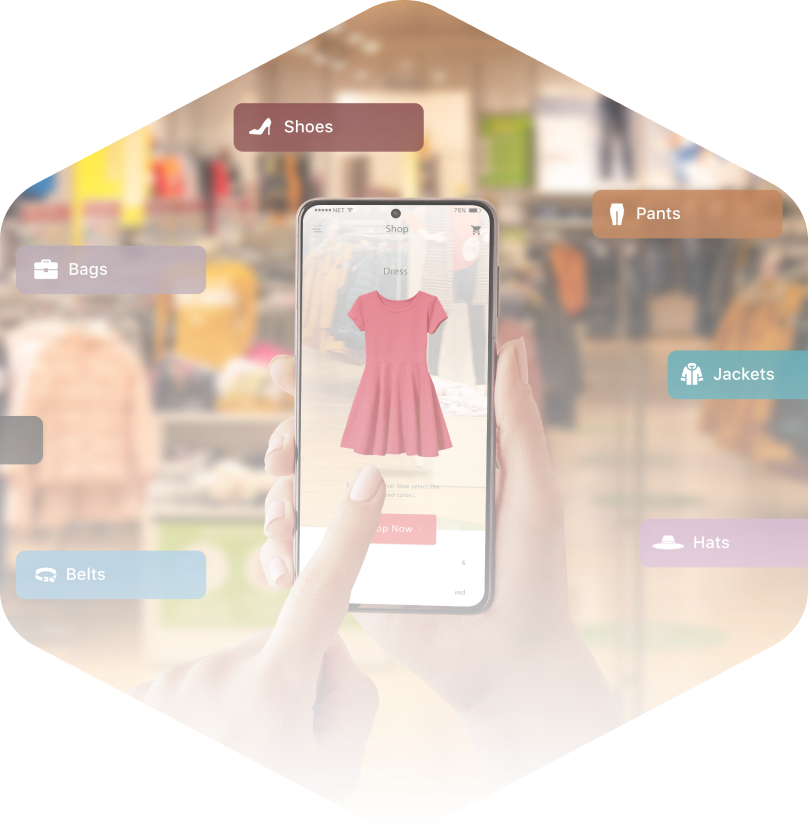CHAPTER 2/5

CONTENTS
👉 Digital Storefront Trends: Innovating the B2B Buying Experience
👉 Customer Experience Revolution: The New Age of CRM
👉 Product Innovation: Meeting the Evolving Needs of B2B Consumers
👉 Monetary Transactions Reinvented: Adapting to the New Payment Landscape
B2B eCommerce is a dynamic, rapidly evolving landscape, with several trends emerging as significant influences on the industry's direction.



An omni-channel approach ensures consistency across all customer touchpoints. Whether a customer chooses to engage via mobile, desktop, or a brick-and-mortar store, they should encounter a seamless, cohesive experience.
The Omni-channel Imperative
B2B buyers crave independence in their purchasing journey. Self-service buying portals enable customers to research, compare, and purchase products or services at their convenience, giving them control over their buying process.
Embracing Self-Service Portals
Social media is no longer just a marketing tool—it's becoming a sales platform. By leveraging social commerce, businesses can connect with their customers on platforms they frequent, offering an effortless shopping experience.
The Power of Social Commerce
B2B brands lag behind B2C in customer experience management. With tech dependant Millennials now making most B2B buying decisions today - these tech trends offer vital competitive advantage!
👉 TREND 1




Some trends in improving the B2B client relationship & their buying process
👉 TREND 2
The New Age of CRM
Automating repetitive tasks, businesses can allocate more resources to customer support, providing guidance and assistance throughout the buying journey, enhancing customer satisfaction, and building long-term relationships.
Client Experience & Enhanced Support
Acquiring new customers is more expensive than etention. Post-pandemic, businesses are shifting focus to nurturing existing relationships. Through information-rich CRM (360-degree view of the customer) and personalized engagement and customer-centric strategies, they're not only retaining customers but also unlocking upselling opportunities.
Customer360: Retention & Upsales
Technology increasingly drives customer self-service, in product configuration, education, buying options - and support. Artificial intelligence (AI), virtual reality (VR), and augmented reality (AR) are being harnessed to deliver more personalized and immersive customer experiences, setting businesses apart in a crowded market.
Personalization Through Technology



The need to improve the modern customer's connection,
relationship and interaction with your product(s)
👉 TREND 3
Transparency in product sourcing, manufacturing, lead-times and pricing, is a growing expectation among customers. Businesses are responding by offering clear, accessible information, fostering trust, and strengthening customer relationships.
Transparency
More businesses are recognizing the importance of sustainability and are implementing eco-friendliness in he product, the supply chain, the packaging and the delivery. This not only benefits the environment but also appeals to the growing number of eco-conscious consumers.
Eco-Consciousness
Real-time inventory management systems are becoming a necessity. They provide businesses with accurate, up-to-date inventory data, enabling better decision-making and preventing stock-outs or overstocking.
Real-time Inventory Management
Modern buyers are more impatient. Efficiency (and accuracy) iin order fulfillment is key to customer satisfaction. Businesses are streamlining their processes to ensure fast, accurate, and reliable delivery of products.
Efficient Fulfillment



Making the payment step(s) as frictionless as possible
👉 TREND 4
Adapting to the New Payment Landscape
The payment landscape is more diverse than ever.
For B2B, open banking and e-invoicing are rising in popularity. Businesses are offering wider variety of payment methods to accommodate different customer preferences, reduce fraud, accelerate funds transferand ensure a frictionless transaction process.
Diverse Payment Options
To cater to diverse customer needs and financial capacities, businesses are offering more flexible options for consuming products or services and payment terms. This includes subscription-based services, leasing, and staggered payment plans.
Flexible Consumption and Payment Terms
Events like Brexit, Covid and the Russia-Ukraine war increased pricing volatility. Businesses are adapting by implementing dynamic pricing strategies, allowing them to adjust prices in real-time based on factors such as demand/supply, competition, and customer behaviour.
Dynamic Pricing

CONTENTS
👉 Digital Storefront Trends: Innovating the B2B Buying Experience
👉 Customer Experience Revolution: The New Age of CRM
👉 Product Innovation: Meeting the Evolving Needs of B2B Consumers
👉 Monetary Transactions Reinvented: Adapting to the New Payment Landscape
B2B eCommerce is a dynamic, rapidly evolving landscape, with several trends emerging as significant influences on the industry's direction.

Social media is no longer just a marketing tool—it's becoming a sales platform. By leveraging social commerce, businesses can connect with their customers on platforms they frequent, offering an effortless shopping experience.
B2B buyers crave independence in their purchasing journey. Self-service buying portals enable customers to research, compare, and purchase products or services at their convenience, giving them control over their buying process.
An omni-channel approach ensures consistency across all customer touchpoints. Whether a customer chooses to engage via mobile, desktop, or a brick-and-mortar store, they should encounter a seamless, cohesive experience.


Embracing Self-Service Portals
The Omni-channel Imperative
The Power of Social Commerce
The New Age of CRM


Automating repetitive tasks, businesses can allocate more resources to customer support, providing guidance and assistance throughout the buying journey, enhancing customer satisfaction, and building long-term relationships.
Customer360: Retention & Upsales
Technology increasingly drives customer self-service, in product configuration, education, buying options - and support. Artificial intelligence (AI), virtual reality (VR), and augmented reality (AR) are being harnessed to deliver more personalized and immersive customer experiences, setting businesses apart in a crowded market.
Client Experience & Enhanced Support
Acquiring new customers is more expensive than etention. Post-pandemic, businesses are shifting focus to nurturing existing relationships. Through information-rich CRM (360-degree view of the customer) and personalized engagement and customer-centric strategies, they're not only retaining customers but also unlocking upselling opportunities.
Personalization Through Technology

Modern buyers are more impatient. Efficiency (and accuracy) iin order fulfillment is key to customer satisfaction. Businesses are streamlining their processes to ensure fast, accurate, and reliable delivery of products.
Efficient Fulfillment
Transparency in product sourcing, manufacturing, lead-times and pricing, is a growing expectation among customers. Businesses are responding by offering clear, accessible information, fostering trust, and strengthening customer relationships.
Transparency
More businesses are recognizing the importance of sustainability and are implementing eco-friendliness in he product, the supply chain, the packaging and the delivery. This not only benefits the environment but also appeals to the growing number of eco-conscious consumers.
Eco-Consciousness
Real-time inventory management systems are becoming a necessity. They provide businesses with accurate, up-to-date inventory data, enabling better decision-making and preventing stock-outs or overstocking.
Real-time Inventory Management


To cater to diverse customer needs and financial capacities, businesses are offering more flexible options for consuming products or services and payment terms. This includes subscription-based services, leasing, and staggered payment plans.
Diverse Payment Options
The payment landscape is more diverse than ever.
For B2B, open banking and e-invoicing are rising in popularity. Businesses are offering wider variety of payment methods to accommodate different customer preferences, reduce fraud, accelerate funds transferand ensure a frictionless transaction process.
Flexible Consumption and Payment Terms
Events like Brexit, Covid and the Russia-Ukraine war increased pricing volatility. Businesses are adapting by implementing dynamic pricing strategies, allowing them to adjust prices in real-time based on factors such as demand/supply, competition, and customer behaviour.
Dynamic Pricing

Adapting to the New Payment Landscape